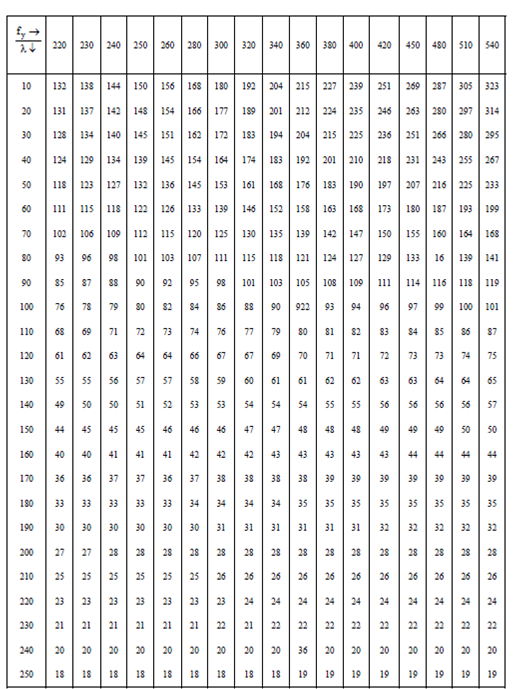Cross-Sectional Shapes of Columns:
The permissible compressive stress (σac) is greatly reduced due to large slenderness ratios (λ) of single member struts. To reduce the value of λ and thus increase the value of σac, the compound section consisting of several standard rolled sections is often used.
A few of such arrangements are shown in Table 3 whereby the geometrical placement of the sections the value of minimum radius of gyration (rmin) is greatly increased, thus, decreasing the slenderness ratio. The followings remarks generally apply.
Rods and square bars, because of their high slenderness ratio, are rarely used as compression members. Single angle (for light loads) and double angles (Tables (a) to (f)) are the most favoured ones for struts. Single beam sections (e.g. ISHB section) and channel sections are used for larger loads. Groups of four angles are joined together by lacings or rods (Tables 3(g) and (h)), giving larger values of the radius of gyration.
Channels and light beam sections provide excellent compound columns with lacing or battens (Tables (k) to (p)). These are used to carry heavy loads as in multi-storeyed buildings or steel bridge trusses. Riveted or welded plates may also form compound column sections (Tables (r) and (s)).
Table: Permissible Stress σac (MPa) in Axial Compression for Steels with Various Yield Stress (Clause 5.1.1)

Radii of gyration of some of the common column sections are given in Figure and may be used for preliminary design calculations. However, exact calculations must be made for final checking.